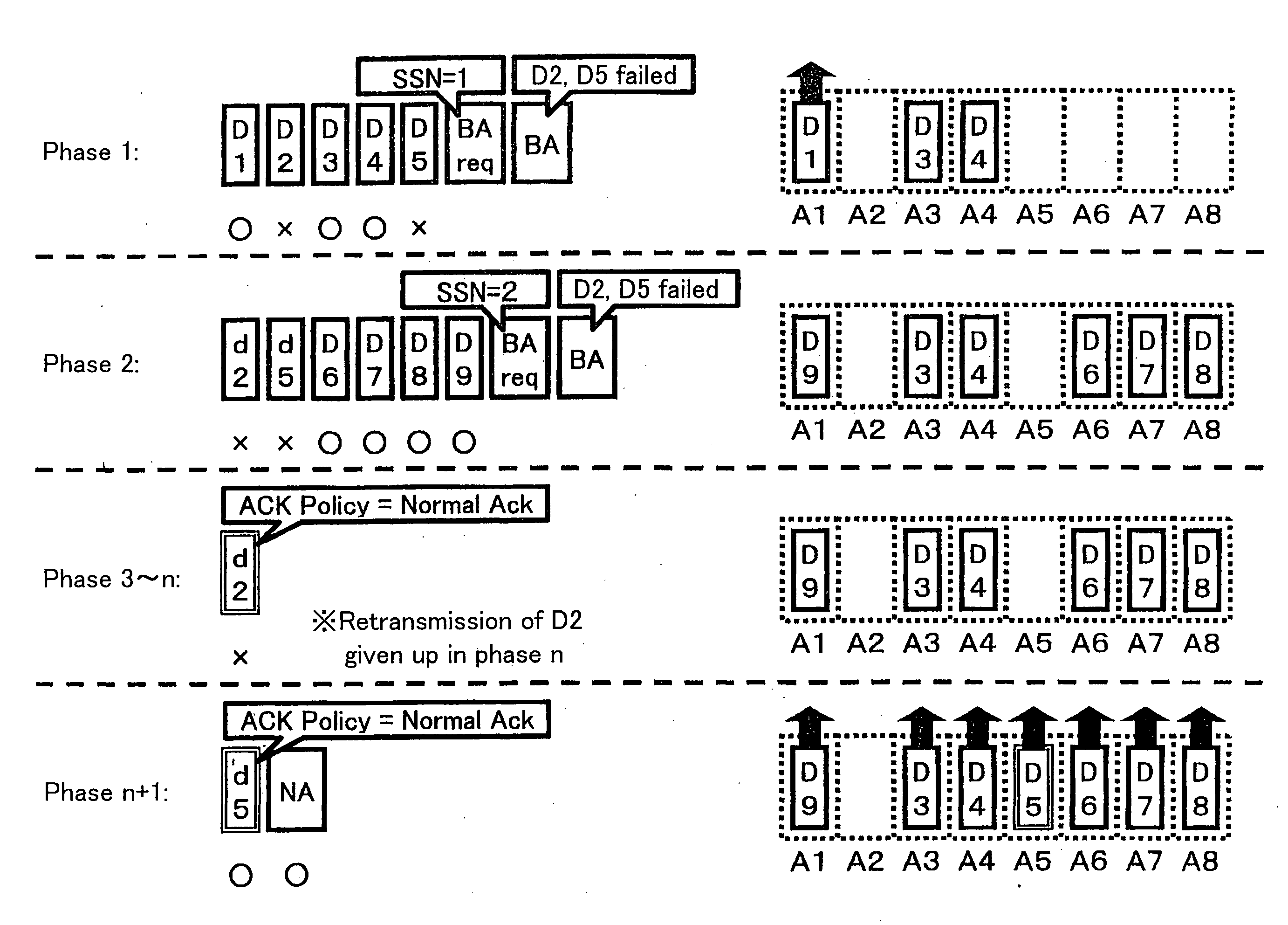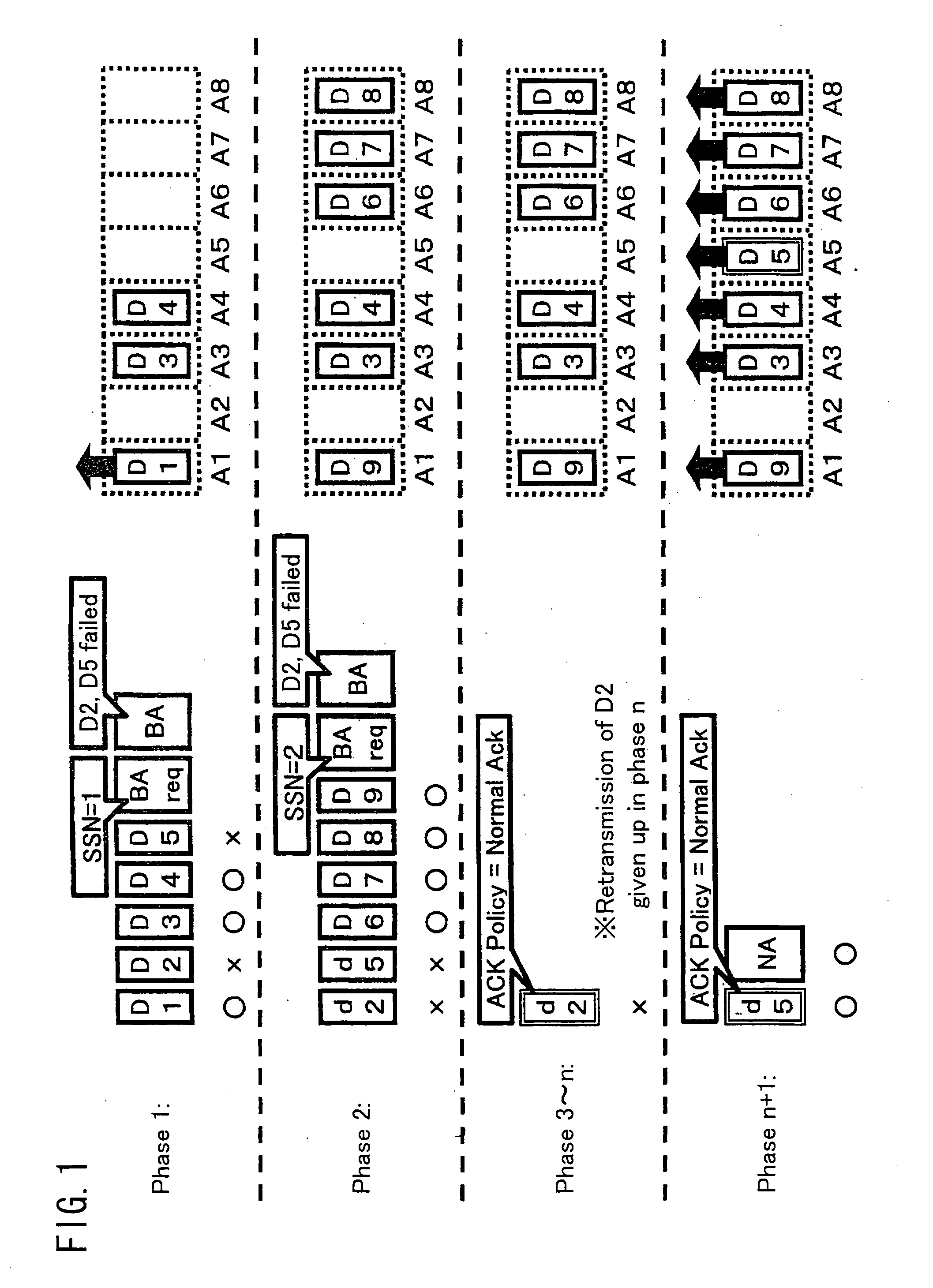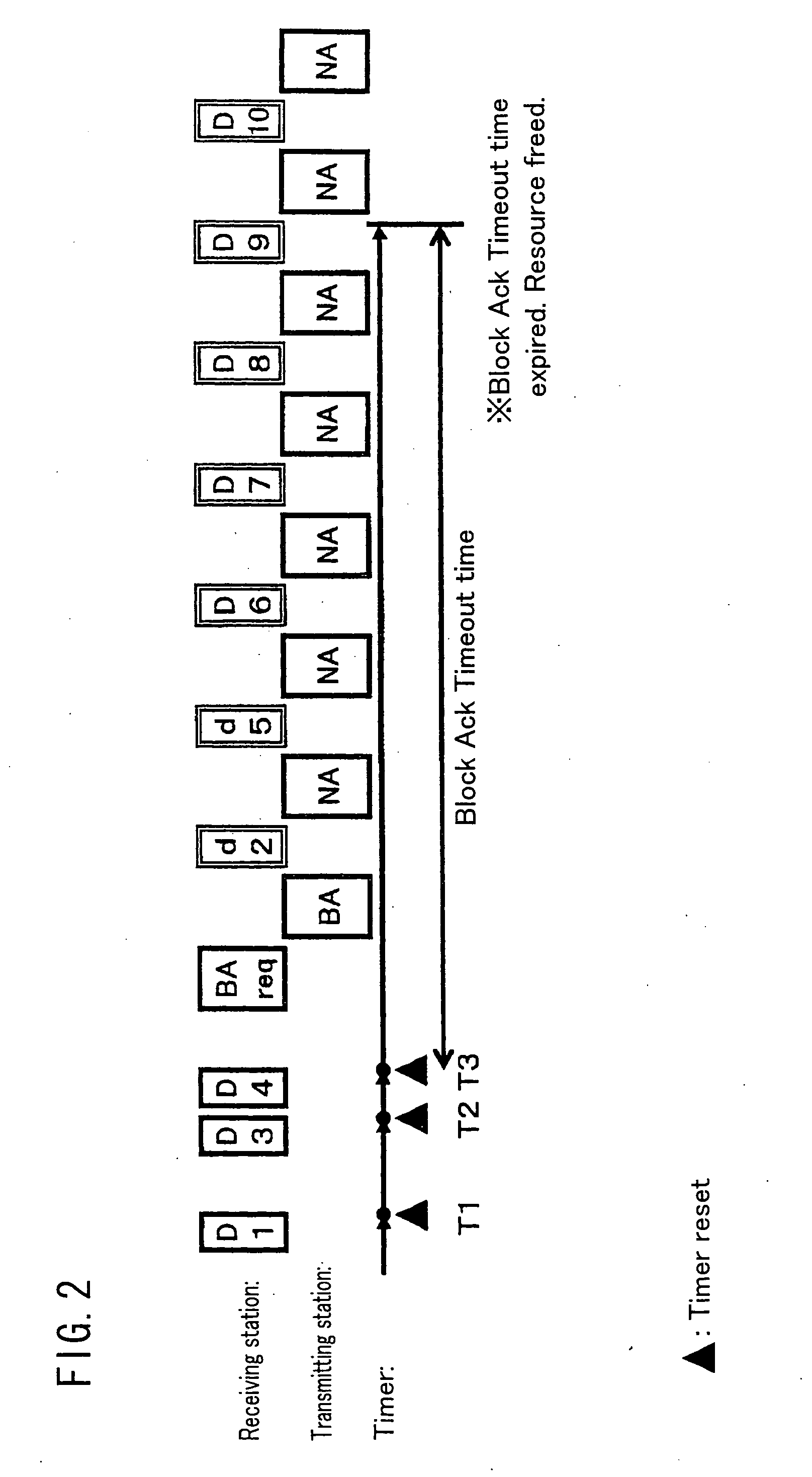Transmitting station, receiving station, communications method, communications program, computer-readable storage medium containing the program
a technology of computer-readable storage and program, applied in the direction of digital transmission, network traffic/resource management, error prevention, etc., can solve the problem that data frames with sequence numbers before x are no longer valid for retransmission
- Summary
- Abstract
- Description
- Claims
- Application Information
AI Technical Summary
Benefits of technology
Problems solved by technology
Method used
Image
Examples
embodiment 1
[0129] Embodiment 1 of the present invention will be described in reference to FIGS. 1, 12, and 13. Embodiment 1 presents an exemplary solution to Issue 1.
[0130]FIG. 12 is a block diagram illustrating the configuration of a transmitting station 1 of the present embodiment. The transmitting station 1 divides, for example, stream data into a plurality of data frames and transmits the divided data frames to a receiving station.
[0131] Referring to FIG. 12, the transmitting station 1 includes a transmitter section 11, a receiver section 12, an Ack request frame generating section 13, a data frame generating section 14, an error frame processing section 16, an untransmitted minimum frame number memory section 17, a receiving station buffer size memory section 18, an Ack scheme switching section 19, and an error frame number memory section 20.
[0132] The transmitter section 11 transmits various frames to the receiving station. For example, the transmitter section 11 transmits the receivi...
embodiment 2
[0209] Embodiment 2 of the present invention is an exemplary solution to Issue 2 by applying rule changes as in alternative rule 1. Embodiment 2 will be now described in reference to FIG. 2 and FIG. 14. FIG. 2 uses the same notation as FIG. 11 in relation to Issue 2. In addition, for convenience, members of the present embodiment that have the same arrangement and function as members of embodiment 1, and that are mentioned in that embodiment are indicated by the same reference numerals and description thereof is omitted.
[0210]FIG. 14 is a block diagram illustrating the configuration of a receiving station 105 of the present embodiment. As shown in FIG. 14, the receiving station 105 includes a receiver section 51, a transmitter section 52, a data frame processing section 53, a BlockAck frame generating section 54, a NormalAck frame generating section 55, a buffer control section (resource control mechanism) 59, a timer 60, a timer control section (timer control mechanism) 61, a buff...
embodiment 3
[0215] Embodiment 3 of the present invention is an exemplary solution to Issue 2 by applying rule changes as in alternative rule 2.
[0216] The receiving station of the present embodiment is configured differently from that of embodiment 2 only in the functions of the timer control section 61. The timer control section 61 of the present embodiment resets the timer 60 only when the receiver section 51 has received a BlockAckReq frame.
[0217] Now, embodiment 3 will be described in reference to FIG. 3 which uses the same notation as FIG. 11 in relation to Issue 2.
[0218]FIG. 3 shows an example where the BlockAck scheme is switched to the NormalAck scheme while frames are being transmitted in the BlockAck scheme.
[0219] Conventionally, the timer is reset every time a data frame is received regardless of what Ack Policy specifies. In the present embodiment, however, rules are changed according to alternative rule 2; the timer is reset only when a BlockAckReq frame has been received. There...
PUM
 Login to View More
Login to View More Abstract
Description
Claims
Application Information
 Login to View More
Login to View More - R&D
- Intellectual Property
- Life Sciences
- Materials
- Tech Scout
- Unparalleled Data Quality
- Higher Quality Content
- 60% Fewer Hallucinations
Browse by: Latest US Patents, China's latest patents, Technical Efficacy Thesaurus, Application Domain, Technology Topic, Popular Technical Reports.
© 2025 PatSnap. All rights reserved.Legal|Privacy policy|Modern Slavery Act Transparency Statement|Sitemap|About US| Contact US: help@patsnap.com



